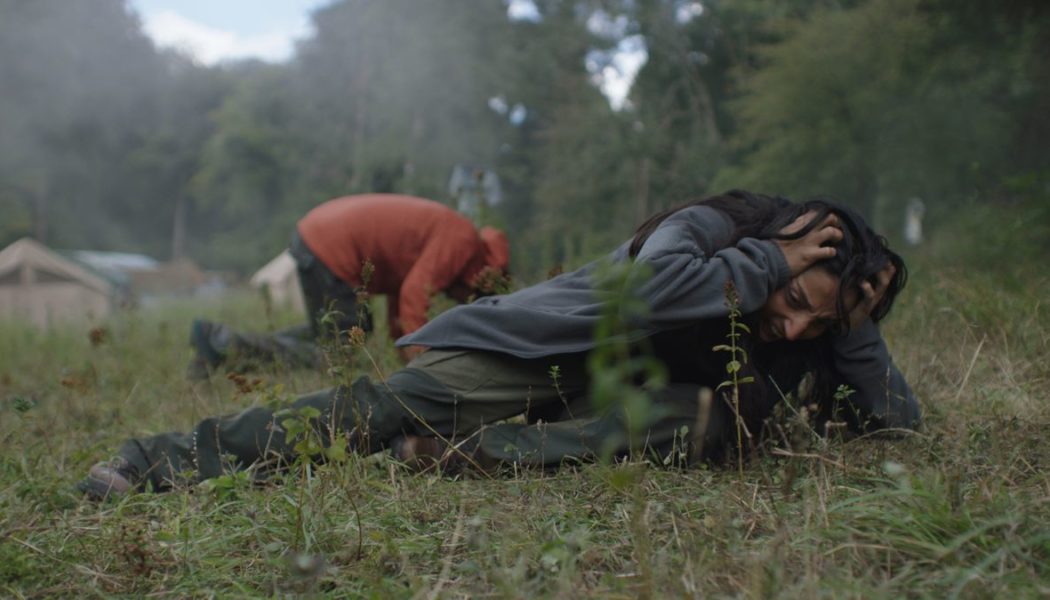The way that we segment history can be divided into two eras: before the advent of penicillin and after — or, in other words, pre-antibiotics and post-antibiotics.
Penicillin, the first antibiotic, was discovered in 1928 by Scottish microbiologist Alexander Fleming, who found that the juices from the Penicillium fungi were able to destroy harmful bacteria. Medicine was transformed forever, and to this day, penicillin is prescribed for everything from lung infections to sexually transmitted illnesses. This extraordinary elixir was by no means produced by fungi by chance, for in some ways fungi operate more akin to humans and animals than plants. One of the reasons that we derive so many antibiotics from fungi is because we are more closely related to them than any other kingdom of organism, according to a 2008 TED Talk by famed American mycologist Paul Stamets.
These properties of fungi — the ones that are used for antibiotic and antiviral medications — weigh heavy on the mind as the world is ravaged by a pandemic. With more than a year passing since COVID-19 was first reported, public discourse, concern, and the overall collective imagination has shifted from focusing on the virus itself to, now, being more interested in its deterrent: the vaccine.
So when Ben Wheatley’s newest film In The Earth opens on a sight familiar to all of us — that of social distancing, quarantine, and protective gear — we can only imagine that the mission that takes Dr. Martin Lowery (Joel Fry) deep into an English forest as part of a project studying fungi is in aims of finding a vaccine. The words “COVID-19” are never actually uttered within the movie, but there is no doubt what inspired Wheatley’s latest effort, especially as it was filmed in the summer of 2020.
But Martin, and accompanying park scout Alma (Ellora Torchia), aren’t venturing into the dense English forest in search of a cure. Instead, they are on a mission to reach a research hub where Dr. Olivia Wendle (Hayley Squires) is attempting to understand the fungal network that connects the trees and plants in every forest and field around the world. Understanding this network better will help them with crop yield, Martin explains.
You see, fungi’s ability to facilitate antibiotics is not their only marvel. In fact, their most compelling attribute is not something that can be visibly observed in the mushrooms and mold that flourish above ground. It is below the surface, subterranean: a complex web of fungal strands that connect in what is called a “mycorrhizal network,” often referred to as the “Wood Wide Web,” which connect the roots of different types of plants in any given plain.
[embedded content]
Jean-Marc Moncalvo, a curator at the Royal Ontario Museum and a professor in the ecology department at the University of Toronto, explains to The Verge that the white filaments of fungi that grow underground — called “mycelium” — form symbiotic relationships with the roots of plants, and effectively connect different species within a forest or a field through a massive, expansive web. The communication that occurs within the fungi is complicated to decrypt, but mycologists have ideas of what the plants are “saying” to one another. Many of these interactions are to warn of danger. “If there is an infection in a plant,” Moncalvo says, “other [unaffected] plants react. It seems that this is ‘volatile chemicals’ at work, like, for instance, how ants communicate through pheromones.”
Moncalvo goes on to explain that this web does more than just spread caution. “This idea of network and the World Wide Web is not just communication of information, it’s also the translocation of nutrients between individual plants in the forest. Eighty percent of land plants are associated with mycelium in their root system. What the plant gains is access to more water and nutrients, what the fungi takes from this exchange is sugar.” He compares this network to a brain: a complex tangle of neurons that connect and interact with one another with different aims and function.
And as Dr. Wendle buries herself deep in a thicketed forest to study this mode of subterranean communication, Martin, Alma, and the outside world grapple with what it means to communicate in an environment that abruptly transitioned into quarantine and social distancing. The beginning of Martin and Alma’s trip into the forest is filled with awkward silences: we have to wonder whether Martin’s dry manner of speech is due to his previous isolation or simply a character trait. It is only when Martin and Alma run into Zach (Reece Shearsmith) a day into their trek that In the Earth takes on the Lovecraftian tone — brooding score, gore, existential confrontations, and all — that defines its horror for the remainder of the movie.
Zach lives in a tented canopy off the grid and is obsessed with a different type of communication: that of contacting Parnag Fegg, a folk tale that speaks of a spirit that inhabits the woods. His pursuit is mystical. There’s a kind of funny irony in a man isolating himself deep in a forest — the secrets of whose plants and fungi scientists have yet to crack — only to focus on the esoteric. Martin and Alma eventually reach Dr. Wendle, but the lines of reason that we expected to separate the scientific and the folklore are blurred by Wheatley in a psychedelic way, a disorientation akin to that of ingesting magic mushrooms (which, rest assured, are featured in the film).
Wheatley’s tale succeeds in being a horror entry that simultaneously acknowledges both the mysteries of the natural world and our connectedness to it despite that. However, when noting the connection between man and earth, it is necessary to recognize that Indigenous people have long known of the properties of fungi, as described in Potawatomi botanist Robin Wall Kimmerer’s brilliant books Gathering Moss and Braiding Sweetgrass.
:no_upscale()/cdn.vox-cdn.com/uploads/chorus_asset/file/22487886/IN_THE_EARTH_Joel_Fry_Ellora_Torchia_courtesy_of_NEON_copy.jpg)
In the film, two distinct tales lure the four characters into the forest: one of fungi weaving the roots of beeches, ashes, and cedars together to communicate, and one of the spirit of the woods, a Blair Witch-like folktale. But what makes In The Earth truly remarkable is that Wheatley doesn’t posit these two systems that have historically been seen as opposites, as incongruous. Wheatley’s thesis is that scientific discovery does not have to be sterilized of the whims and emotions of the human being. It’s a symbiotic relationship that can serve as an allegory for the ways in which fungi and plants merge to form an environment.
“One has to look at nature and organisms as an interconnected system,” Moncalvo asserts. “We tend to say that the unit is the species — there’s the fungi, the plants, the animals — but the understanding should be that the ecosystem is the unit.” Superimposing this paradigm onto Wheatley’s film, the units of the human — emotion and reason — should also be viewed as informing one another.
This idea of connectivity has begun to emerge within horror cinema as both a visual motif and a narrative premise. In Alex Garland’s 2018 sci-fi horror film Annihilation, based on the book of the same name by Jeff VanderMeer, a group of scientists venture into a zone occupied by an anomaly referred to as “Shimmer.” The film’s most haunting visuals are those of skeletons belonging to scientists who had lost their lives on previous expeditions, springing with vines, mosses, and flowers. Whatever this “Shimmer” is, it merges the molecular makeup of all that is alive, indiscriminate to which kingdom the being belongs. A similar tableau characterizes a mysterious entity in Apostle, a horror film directed by Gareth Evans and also released in 2018, where humans are entangled in the roots of an island and serve as its environmental guardians.
And it’s something that hasn’t escaped the grips of horror television, either: in the first season of NBC’s Hannibal, the second episode, entitled “Amuse-Bouche,” focuses on a pharmacist who buries people alive to facilitate the growth of fungi on their body. The pharmacist, Eldon Stammets, is named after the aforementioned mycologist, who Mancolvo labels a leading and important voice in the study of mycorrhizae.
Following its debut at the Sundance Film Festival this past January, In The Earth received a lukewarm reception, and for an understandable reason: fans expecting a traditional horror film would not find one here. Other than a few moments of classic body horror, the narrative and visuals of the film evade the usual tropes of the genre. But In The Earth is a good indicator of the direction in which horror is moving: meditative probes into humanity’s place in the natural world. While the horror movies that characterized the previous decades were largely concerned with the supernatural severed from ecology — spirits haunting homes, people, or heirlooms — writers and directors have gradually been shifting the sensibilities of the genre to consider the fungi and plants that sustain the Earth’s life.
In The Earth — with its psychedelic interludes of plant imagery, edited in a way that resembles the freneticism of a Guy Maddin film, and its haunting synth score, composed by Clint Mansell — is a challenging but worthwhile film. One that simultaneously questions and proclaims the connection man has with earth, and science with mysticism.
In The Earth is currently playing in theaters, and will be available digitally on May 7th.










